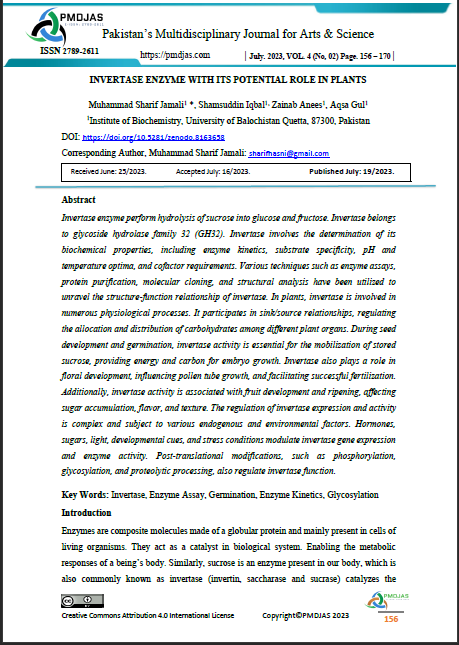Invertase Enzyme with Its Potential Role in Plants
DOI:
https://doi.org/10.5281/zenodo.8163658Keywords:
Invertase, Enzyme Assay, Germination, Enzyme Kinetics, GlycosylationAbstract
Invertase enzyme perform hydrolysis of sucrose into glucose and fructose. Invertase belongs to glycoside hydrolase family 32 (GH32). Invertase involves the determination of its biochemical properties, including enzyme kinetics, substrate specificity, pH and temperature optima, and cofactor requirements. Various techniques such as enzyme assays, protein purification, molecular cloning, and structural analysis have been utilized to unravel the structure-function relationship of invertase. In plants, invertase is involved in numerous physiological processes. It participates in sink/source relationships, regulating the allocation and distribution of carbohydrates among different plant organs. During seed development and germination, invertase activity is essential for the mobilization of stored sucrose, providing energy and carbon for embryo growth. Invertase also plays a role in floral development, influencing pollen tube growth, and facilitating successful fertilization. Additionally, invertase activity is associated with fruit development and ripening, affecting sugar accumulation, flavor, and texture. The regulation of invertase expression and activity is complex and subject to various endogenous and environmental factors. Hormones, sugars, light, developmental cues, and stress conditions modulate invertase gene expression and enzyme activity. Post-translational modifications, such as phosphorylation, glycosylation, and proteolytic processing, also regulate invertase function.
Downloads






